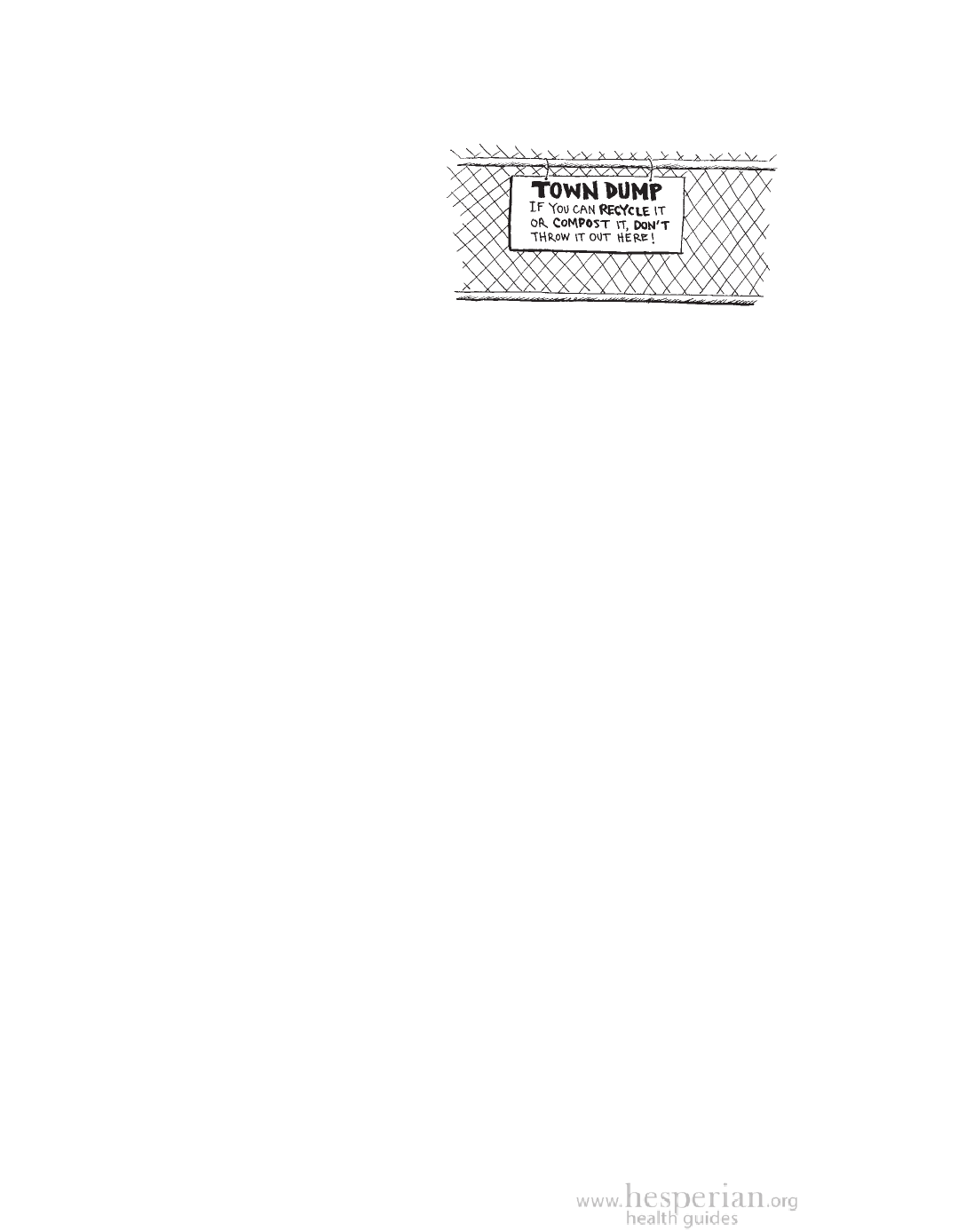
412 Solid Waste: Turning a Health Risk Into a Resource
Sanitary Landfills
A sanitary landfill is a pit with
a protected bottom where trash
is buried in layers, compacted
(pressed down to make it more
solid), and covered. A sanitary
landfill can reduce harm from
waste that has collected, and is safer than an open dumping site. But even the
best sanitary landfill will fill up and, after many years, probably start to leak.
To solve our waste problems, we still need to prevent waste in the first place.
It is difficult to turn open dumps into sanitary landfills. Instead, a
community can build a new sanitary landfill and clean up the old site by
transporting trash to the new one. A sanitary landfill protects community
health when:
• it is built away from where people live.
• it is covered to prevent insects and other disease-carrying animals
from breeding.
• it has a lining of hard-packed clay soil or plastic to prevent chemicals
and germs from contaminating groundwater.
Because building and maintaining a sanitary landfill is a lot of work, it usually
needs to be done in partnership with the community, local government, and
other organizations, such as churches or businesses.
A landfill protects community health only if it is well managed. Good
management includes training and support for landfill workers, and working
together with resource recovery centers, toxic waste collectors, and local
government.
Selecting a site
The first step in planning a landfill is choosing a site. In most places, the
government requires a site assessment (a close look at the conditions of the
site) before construction. This means a study of the type of soil and rocks, the
kinds of plants that grow there, the distance from water sources and homes,
and being sure that it is not a flood zone. For health and safety, a landfill site
should be at least:
• 150 meters from coastal waters.
• 250 meters from fresh water, such as streams, ponds or swamps.
• 250 meters from protected forests.
• 500 meters from homes, and from wells or other drinking water.
• 500 meters from earthquake fault lines.
The bottom of the pit must be at least 2 meters above the highest groundwater
level.
A Community Guide to Environmental Health 2012